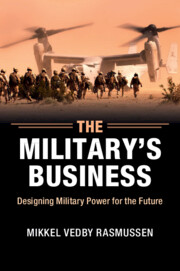3 - The modern military system: the US case
Published online by Cambridge University Press: 05 March 2015
Summary
The US military is heavy. It is heavy in the sense of military jargon in that it is organised according to combined arms doctrine, and it is heavy in the sense of owning a lot of stuff that weighs a lot. The US military is also heavy in the more popular sense of the word, however; it is a large, complex, awe-inspiring organisation. A few examples demonstrate how heavy the US military actually is on all three counts. A heavy US Army brigade needs approximately 600 tons of supplies per day in combat. The 3,100 soldiers in the brigade require 300 tons of fuel, 130 tons of water, 85 dry stores and 60 tons of ammunition. An Air Force combat wing uses up to 2,000 tons of ground-support equipment, including 100–200 tons of ammunition per day and up to 3,500 tons of fuel a day. Transporting these forces and their supplies represents a challenge unto itself. To supply an Army brigade with 600 tons of supplies per day roughly requires 100 trucks. A major road in good condition can perhaps handle 2,000 truckloads a day. Transporting the US armed forces to other places on the globe is thus a major issue in determining ‘the how’ of the military business model. Even the US armed forces cannot easily be deployed beyond a well-functioning infrastructure. Good roads, sizeable harbours and large airfields are a precondition for deployment. However, even a large airfield cannot manage more than 1,000 tons of supplies per day. One way to work around this issue is to maintain an overseas presence. If the US Navy was operating from American ports instead of overseas bases, some estimates conclude that it would need five to six times as many ships to keep the current force posture in the Persian Gulf and Western Pacific.
- Type
- Chapter
- Information
- The Military's BusinessDesigning Military Power for the Future, pp. 42 - 74Publisher: Cambridge University PressPrint publication year: 2015



